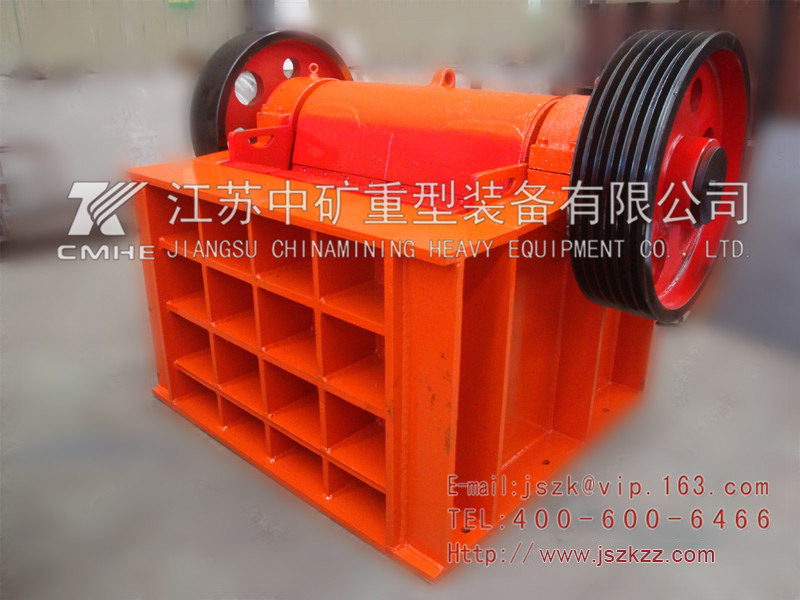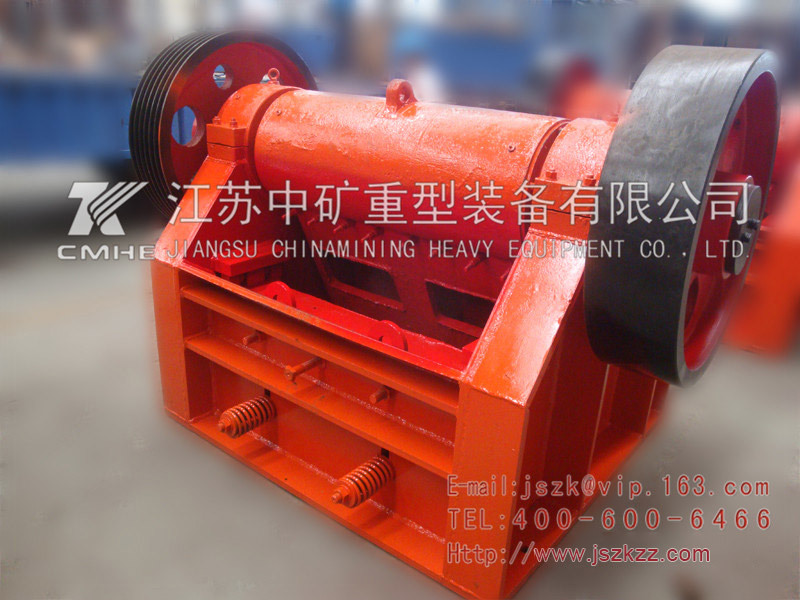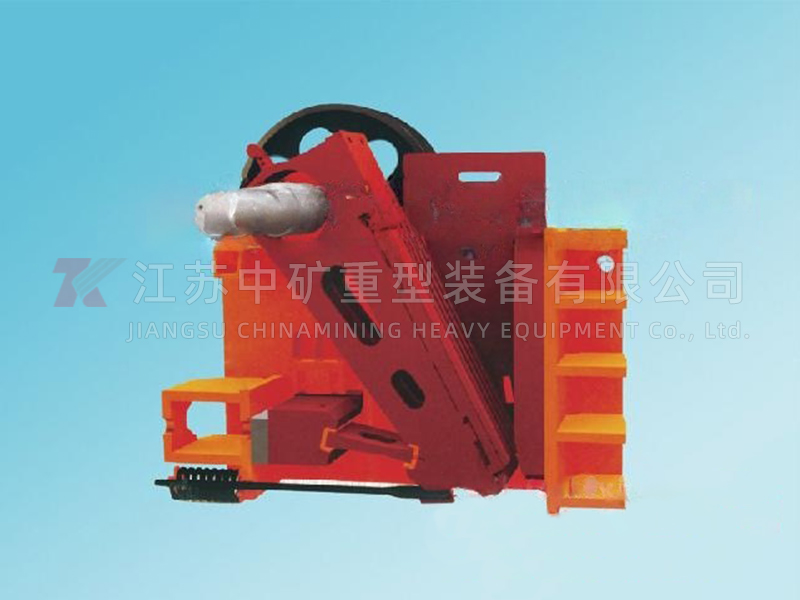Jaw crusher
Overview and classification of jaw crushers:
Jaw crusher consists of a movable jaw plate and a stationary jaw plate and these two jaw plates form a crushing chamber. It simulates the movement of two jaws of animals and completes material crushing operation. It is widely used in industries such as mining, smelting, building materials, highways, railways, water conservancy and chemical engineering for crushing medium particle size of various ores and bulk materials. The compressive strength of the crushed material is 320Mpa. The working part of jaw crusher is two jaw plates. One is a fixed jaw plate (fixed jaw) which is vertically (or slightly outward inclined at the upper end) fixed on the front wall of the machine body and the other is a movable jaw plate (movable jaw) which is in an inclined position and forms a crushing chamber (working chamber) with the fixed jaw plate that is larger in the upper part and smaller in the lower part. The movable jaw plate performs periodic reciprocating motion against the fixed jaw plate, separating and approaching by turns. When separated, the material enters the crushing chamber and the finished product is discharged from the bottom. When approaching, the material placed between the two jaw plates is crushed by compression, bending and splitting. Jaw crushers can be divided into simple pendulum jaw crushers, compound pendulum jaw crushers and comprehensive pendulum jaw crushers according to different pendulum modes of the movable jaw plates.
Characteristics of jaw crushers:
The crushing chamber is deep and has no dead zone, which improves the feeding capacity and output.
Its crushing ratio is large, and the product particle size is uniform.
The gasket type discharge port adjustment device is reliable and convenient with a large adjustment range, increasing the flexibility of the equipment.
Lubrication system, convenient component replacement and simple equipment maintenance
Simple structure, reliable operation, low operating costs and energy-saving: single machine energy-saving by 15% to 30%, system energy-saving by more than twice the energy-saving of single machine
The adjustment range of the discharge port is large which can meet the requirements of different users.
Low noise and less dust
Technical Parameters
Model | (mm×mm) Feed inlet size | (mm) Maximum feed particle size | (t/h) Processing capacity | (r/min) Eccentric shaft speed | kW) Motor power | (mm) Adjustment range of discharge port |
PE-250×400 | 250×400 | 210 | 5-20 | 300 | 15 | 20-60 |
PE-400×600 | 400×600 | 340 | 16-65 | 275 | 30 | 40-100 |
PE-500×750 | 500×750 | 425 | 45-100 | 275 | 55 | 50-100 |
PE-600×900 | 600×900 | 500 | 50-120 | 250 | 55-75 | 65-160 |
PE-750×1060 | 750×1060 | 630 | 52-180 | 250 | 110 | 80-140 |
PE-800×1060 | 800×1060 | 650 | 85-143 | 250 | 110 | 100-200 |
PE-870×1060 | 870×1060 | 670 | 181-210 | 250 | 110 | 200-260 |
PE-900×1200 | 900×1200 | 750 | 140-260 | 200 | 110 | 95-165 |
PE-1000×1200 | 1000×1200 | 850 | 160-300 | 200 | 110 | 195-265 |
PE-1200×1500 | 1200×1500 | 1020 | 300-600 | 180 | 160 | 150-300 |
PEX-250×750 | 250×750 | 210 | 8-22 | 330 | 22 | 25-60 |
PEX-250×1000 | 250×1000 | 210 | 16-52 | 330 | 30-37 | 25-60 |
PEX-250×1200 | 250×1200 | 210 | 20-60 | 330 | 37 | 25-60 |
PEX-300×1300 | 300×1300 | 250 | 20-90 | 330 | 55 | 20-90 |



